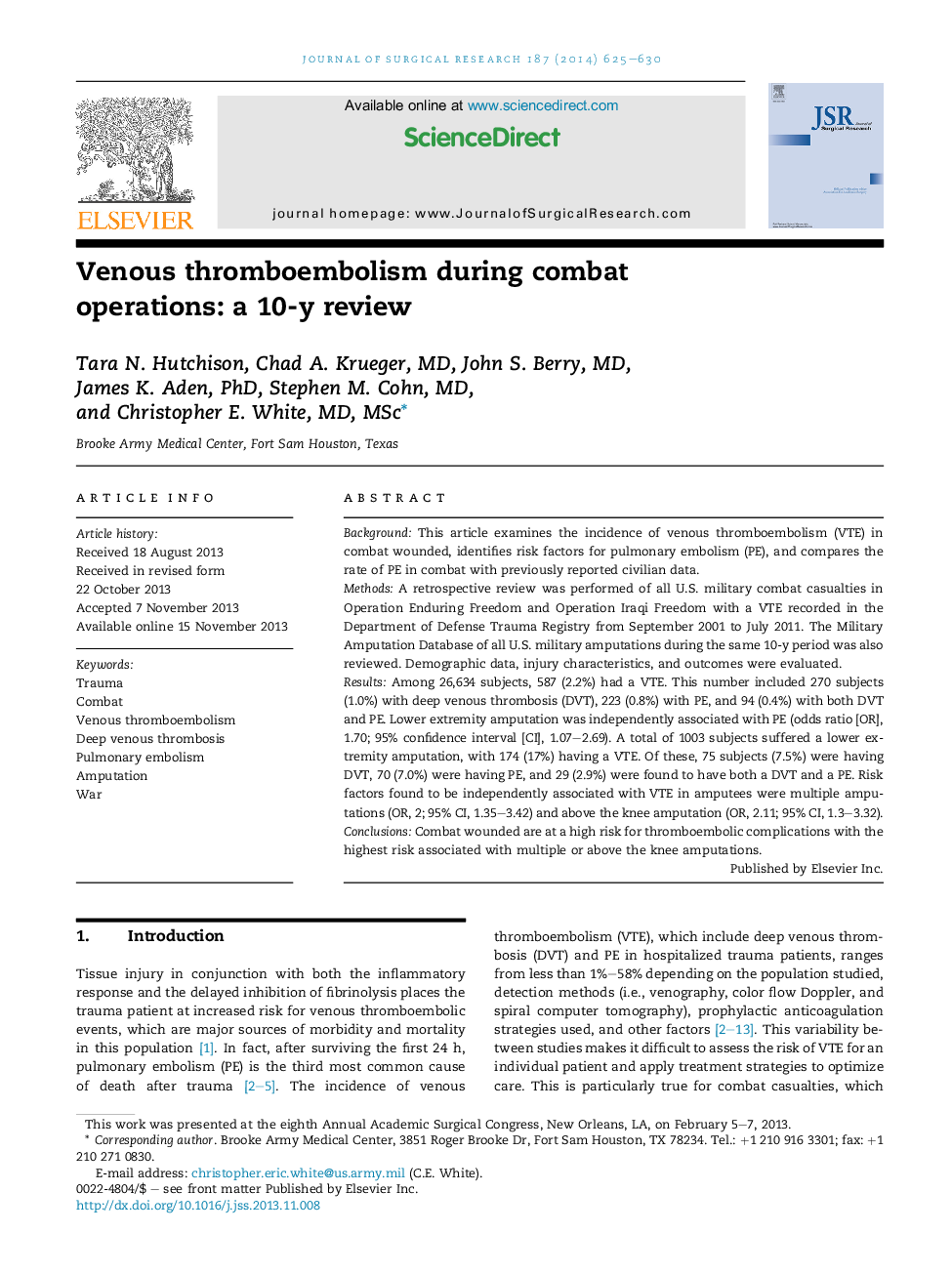| کد مقاله | کد نشریه | سال انتشار | مقاله انگلیسی | نسخه تمام متن |
|---|---|---|---|---|
| 4300436 | 1288420 | 2014 | 6 صفحه PDF | دانلود رایگان |
BackgroundThis article examines the incidence of venous thromboembolism (VTE) in combat wounded, identifies risk factors for pulmonary embolism (PE), and compares the rate of PE in combat with previously reported civilian data.MethodsA retrospective review was performed of all U.S. military combat casualties in Operation Enduring Freedom and Operation Iraqi Freedom with a VTE recorded in the Department of Defense Trauma Registry from September 2001 to July 2011. The Military Amputation Database of all U.S. military amputations during the same 10-y period was also reviewed. Demographic data, injury characteristics, and outcomes were evaluated.ResultsAmong 26,634 subjects, 587 (2.2%) had a VTE. This number included 270 subjects (1.0%) with deep venous thrombosis (DVT), 223 (0.8%) with PE, and 94 (0.4%) with both DVT and PE. Lower extremity amputation was independently associated with PE (odds ratio [OR], 1.70; 95% confidence interval [CI], 1.07–2.69). A total of 1003 subjects suffered a lower extremity amputation, with 174 (17%) having a VTE. Of these, 75 subjects (7.5%) were having DVT, 70 (7.0%) were having PE, and 29 (2.9%) were found to have both a DVT and a PE. Risk factors found to be independently associated with VTE in amputees were multiple amputations (OR, 2; 95% CI, 1.35–3.42) and above the knee amputation (OR, 2.11; 95% CI, 1.3–3.32).ConclusionsCombat wounded are at a high risk for thromboembolic complications with the highest risk associated with multiple or above the knee amputations.
Journal: Journal of Surgical Research - Volume 187, Issue 2, April 2014, Pages 625–630
